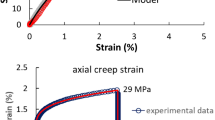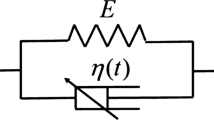Constitutive models of viscoelasticity in combination with fractional differential operators are successfully used by many authors to describe the mechanical properties of polymers. The topic of the present paper is the investigation of rheological models incorporating fractional damping elements from the point of view of thermodynamics. We take the Clausius Duhem inequality as admissibility criterion and investigate uniaxial and three-dimensional deformation processes at constant temperature. We specify sufficient conditions and show that rheological models, which consist of springs in combination with fractional dashpots, are compatible with the dissipation principle. As a new aspect of the subject, we present a systematic method for deriving the free energy functionals. With the help of two examples we demonstrate that the free energy of fractional systems can be derived as a generalisation of related discrete systems. To illustrate this method, we study in detail an isolated fractional dashpot (also known as a power-law model) and a fractional standard solid (Zener model). Finally, we propose a three-dimensional formulation of the fractional Zener model and specify the corresponding free energy functional.
Similar content being viewed by others
Author information
Authors and Affiliations
Additional information
Received: July 3, 1996
Rights and permissions
About this article
Cite this article
Lion, A. On the thermodynamics of fractional damping elements. Continuum Mech Thermodyn 9, 83–96 (1997). https://doi.org/10.1007/s001610050057
Issue Date:
DOI: https://doi.org/10.1007/s001610050057




